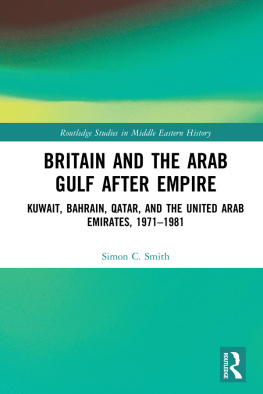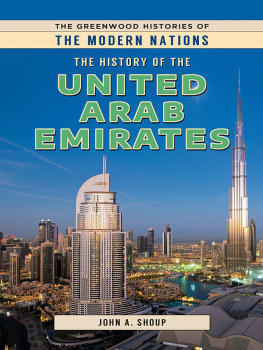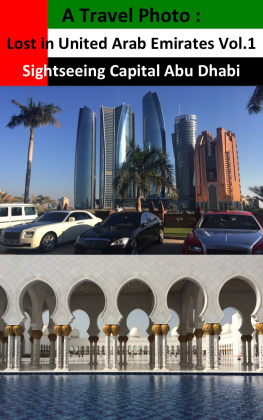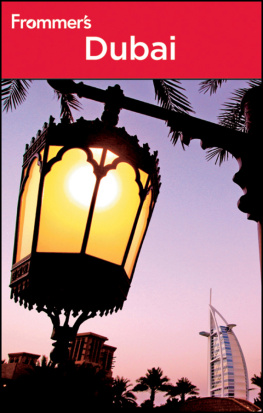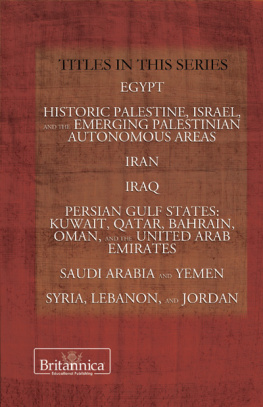Michael Quentin Morton - Keepers of the Golden Shore: United Arab Emirates
Here you can read online Michael Quentin Morton - Keepers of the Golden Shore: United Arab Emirates full text of the book (entire story) in english for free. Download pdf and epub, get meaning, cover and reviews about this ebook. publisher: Reaktion Books, genre: Home and family. Description of the work, (preface) as well as reviews are available. Best literature library LitArk.com created for fans of good reading and offers a wide selection of genres:
Romance novel
Science fiction
Adventure
Detective
Science
History
Home and family
Prose
Art
Politics
Computer
Non-fiction
Religion
Business
Children
Humor
Choose a favorite category and find really read worthwhile books. Enjoy immersion in the world of imagination, feel the emotions of the characters or learn something new for yourself, make an fascinating discovery.
- Book:Keepers of the Golden Shore: United Arab Emirates
- Author:
- Publisher:Reaktion Books
- Genre:
- Rating:5 / 5
- Favourites:Add to favourites
- Your mark:
- 100
- 1
- 2
- 3
- 4
- 5
Keepers of the Golden Shore: United Arab Emirates: summary, description and annotation
We offer to read an annotation, description, summary or preface (depends on what the author of the book "Keepers of the Golden Shore: United Arab Emirates" wrote himself). If you haven't found the necessary information about the book — write in the comments, we will try to find it.
Keepers of the Golden Shore: United Arab Emirates — read online for free the complete book (whole text) full work
Below is the text of the book, divided by pages. System saving the place of the last page read, allows you to conveniently read the book "Keepers of the Golden Shore: United Arab Emirates" online for free, without having to search again every time where you left off. Put a bookmark, and you can go to the page where you finished reading at any time.
Font size:
Interval:
Bookmark:

KEEPERS
OF
THE
GOLDEN
SHORE

A History of the United Arab Emirates
M ICHAEL Q UENTIN M ORTON
REAKTION BOOKS
Published by Reaktion Books Ltd
Unit 32, Waterside
4448, Wharf Road
London N1 7UX, UK
www.reaktionbooks.co.uk
First published 2016
Copyright Michael Quentin Morton 2016
All rights reserved
No part of this publication may be reproduced, stored in a retrieval system, or transmitted, in any form or by any means, electronic, mechanical, photocopying, recording or otherwise, without the prior permission of the publishers
Page references in the Photo Acknowledgements and
Index match the printed edition of this book.
Printed and bound in Great Britain by TJ International, Padstow, Cornwall
A catalogue record for this book is available from the British Library
eISBN: 9781780236155
WHO WERE THE people of this land and what happened to them? Since the discovery of oil, the United Arab Emirates (UAE) has experienced its own version of the Big Bang, being transformed from a traditional society to a modern state within the space of 50 years. If not for a keen interest in history among its people, many traces of the past might well have been obliterated in the process. But the past has not been forgotten, or destroyed, and each of the seven emirates of the UAE has a rich and diverse story to tell.
Keepers of the Golden Shore weaves these various strands together. It starts with a land that was a meeting place of many cultures, then traces the wanderers who emerged from the shadows of history and settled here, through their maritime encounters and tribal evolutions to the modern age all bringing to life the tribes that became a nation. Many textures and nuances of their history still resonate today, and it is only by understanding the past that we can make sense of the politics and people of the present-day UAE.
It will be noticed that I have used the term Arabian Gulf throughout the book rather than Persian Gulf, unless the historical context requires otherwise. I realize that this is a contentious issue in the Gulf today but, since this book is about the Arab side of the Gulf, this description is used for practical reasons without intending to make any judgement in the matter.
The early sun on the scene seemed to clothe the morning with the quality of the age of Homer and the heroes and it seemed an ageless and timeless morning, at once giving the impression of the dawn of mans history and of present vital reality.
Donald Hawley, Political Resident
On a journey between Dubai and Abu Dhabi in July 1960

Dust storms blow over the Arabian Peninsula, covering parts of Saudi Arabia, Yemen, Oman and the United Arab Emirates.
THEY KNEW ALL about the rock, where it was and what was written on it, even twenty years after it had been bulldozed for a new road. All their history was written on that rock and, in the space of a few seconds, it was gone. The old men only had their memories to fall back on, although that was not unusual in their world; the writing on the rock was the exception rather than the rule. There was no local tradition of the written word, and tribal memories were recounted through the centuries over the campfire or in the shade of palm trees. They told of great battles in which many proud warriors died, without any hint of disbelief or exaggeration; they called up events from hundreds of years ago as if they were within living memory; they told stories that were as fresh as the breaking dawn.
But it is rocks that provide the earliest record of the land of the Emirates, though not exactly in the way the tribesmen remembered. One rock layer might inform the geologist that this part was once a river bed, or that part was a swamp or a desert. Fossils tell a story too, animal and plant remains trapped in time revealing the age of rocks, their original location and the prevailing climate when they were laid down. They can also tell us of a world turned inside out, where fossilized sea shells have been found in limestone rocks high up in the mountains, far from their ancient habitats on the seabed.
There are no eyewitnesses to these events, only the testimony of rocks. They tell us how the Arabian Plate started out in the southern hemisphere and drifted sedately northwards, travelling at only a few centimetres per year, or as fast as a fingernail grows. But the movement of the plate was enough to cause the tectonic equivalent of a car crash. Arabia collided with Asia, leaving mountain belts that are apparent today, such as the Zagros of Iran and the Al Hajar of Oman, of which the Ruus al-Jibal is a northerly extension. The Arabian Plate tilted, its eastern side pushed downwards and becoming part of a shallow, warm sea. This was the Tethys Sea, rich in the building blocks of petroleum, plankton and other organic material. Here, in the depths of the Earth, the great oilfields of the region were formed and the destiny of the United Arab Emirates (UAE) was made.
All the while, the climate was changing at times, the land bore little resemblance to the arid deserts of the modern UAE. Between six and eight million years ago, we might find ourselves in a wilderness, teeming with elephants, giraffes, leopards, crocodiles and the like, where wide rivers ran through lush grassland and forest. Modern satellite images reveal the outlines of rivers twisting down from the Hajar Mountains to the Gulf coast, the only visible evidence of their existence today being the creeks that puncture the shoreline. The reason why mammals the size of double-decker buses are not strolling down Sheikh Zayed Road today is, of course, global climate change; the weather changed, the region became drier and the animals moved on.
In the same way that climate dictated the fate of species, so it affected patterns of human settlement and migration, bringing the first wave of humans from East Africa. Stone tools unearthed around Jebel Faya, a mountain in the emirate of Sharjah, suggest that they came out of Africa much earlier than previously thought, some 127,000 years ago. These early migrants might have crossed the Red Sea at the shallow Bab-el-Mandeb strait, which was then shallow enough to allow the passage of small boats, and then travelled through a relatively vegetated southern Arabia to arrive at Jebel Faya. Whether they went any further is open to speculation, and if they did, where might they have gone? It is likely that they travelled to Southeast Asia and beyond, even reaching Australia.
In this distant world, where nothing appears familiar to the modern eye, changes were gradual but profound. From our vantage point, it seems remarkable that about 75,000 years ago the sea retreated from the Arabian Gulf and left a ribbon of green in its wake. This Gulf Oasis connected with the Fertile Crescent that runs from Iraq to the Levant, cutting a swathe through the heart of the region. There may also have been smaller oases dotted around the valley, fed by freshwater springs, but the truly impressive feature of this natural paradise was a river system, an extension of the Tigris and Euphrates, that flowed from the Taurus Mountains to the Strait of Hormuz, where it met the remaindered sea.
Font size:
Interval:
Bookmark:
Similar books «Keepers of the Golden Shore: United Arab Emirates»
Look at similar books to Keepers of the Golden Shore: United Arab Emirates. We have selected literature similar in name and meaning in the hope of providing readers with more options to find new, interesting, not yet read works.
Discussion, reviews of the book Keepers of the Golden Shore: United Arab Emirates and just readers' own opinions. Leave your comments, write what you think about the work, its meaning or the main characters. Specify what exactly you liked and what you didn't like, and why you think so.



